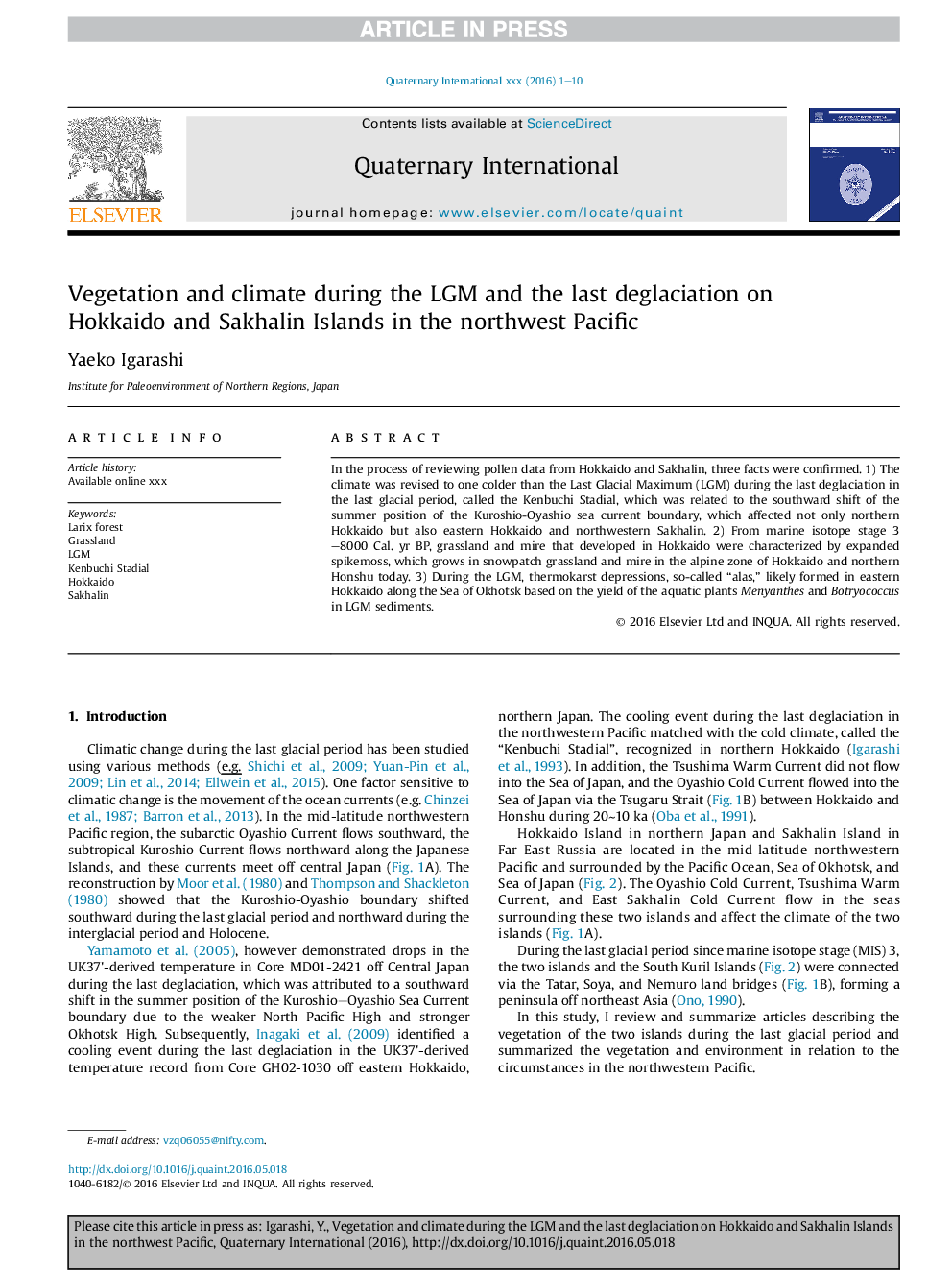| Article ID | Journal | Published Year | Pages | File Type |
|---|---|---|---|---|
| 5114001 | Quaternary International | 2016 | 10 Pages |
Abstract
In the process of reviewing pollen data from Hokkaido and Sakhalin, three facts were confirmed. 1) The climate was revised to one colder than the Last Glacial Maximum (LGM) during the last deglaciation in the last glacial period, called the Kenbuchi Stadial, which was related to the southward shift of the summer position of the Kuroshio-Oyashio sea current boundary, which affected not only northern Hokkaido but also eastern Hokkaido and northwestern Sakhalin. 2) From marine isotope stage 3-8000Â Cal. yr BP, grassland and mire that developed in Hokkaido were characterized by expanded spikemoss, which grows in snowpatch grassland and mire in the alpine zone of Hokkaido and northern Honshu today. 3) During the LGM, thermokarst depressions, so-called “alas,” likely formed in eastern Hokkaido along the Sea of Okhotsk based on the yield of the aquatic plants Menyanthes and Botryococcus in LGM sediments.
Related Topics
Physical Sciences and Engineering
Earth and Planetary Sciences
Geology
Authors
Yaeko Igarashi,
